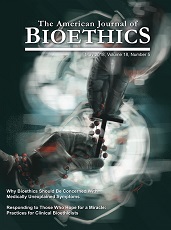Linda MacDonald Glenn, Jeanann Boyce

Extract
The strength of the nondualistic-approach is that it will contribute to “meaningful dialogue about the role of the conscience” which depends on “shared definitions of the relevant terms” (Lawrence and Curlin 2007, 10). This approach of “shared definitions” can also be termed commensurability— when two people who hold incommensurable values can create common ground when one or both changes their values, empathize or agree to disagree and work towards a common goal (Glenn 2003). . . The alternative to seeking commensurability is the enforcement of a law, which is a solution that does not always resolve the underlying issues. The legal system devotes many resources to the resolving of problems, but the result is often “winner-take-all”—without regard to the long-term consequences and impact on the relationship of the parties.
Glenn LM, Boyce J. The Tao of Conscience: Conflict and Resolution (Conscience in Medicine). Am J Bioeth. 2007;7(12):33.